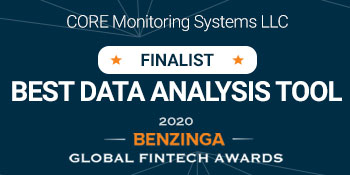Inquiry Into Apple's Competitor Dynamics In Technology Hardware, Storage & Peripherals Industry
Author: Benzinga Insights | November 12, 2025 10:00am
In today's rapidly changing and highly competitive business world, it is vital for investors and industry enthusiasts to carefully assess companies. In this article, we will perform a comprehensive industry comparison, evaluating Apple (NASDAQ:AAPL) against its key competitors in the Technology Hardware, Storage & Peripherals industry. By analyzing important financial metrics, market position, and growth prospects, we aim to provide valuable insights for investors and shed light on company's performance within the industry.
Apple Background
Apple is among the largest companies in the world, with a broad portfolio of hardware and software products targeted at consumers and businesses. Apple's iPhone makes up a majority of the firm sales, and Apple's other products like Mac, iPad, and Watch are designed around the iPhone as the focal point of an expansive software ecosystem. Apple has progressively worked to add new applications, like streaming video, subscription bundles, and augmented reality. The firm designs its own software and semiconductors while working with subcontractors like Foxconn and TSMC to build its products and chips. Slightly less than half of Apple's sales come directly through its flagship stores, with a majority of sales coming indirectly through partnerships and distribution.
| Company |
P/E |
P/B |
P/S |
ROE |
EBITDA (in billions) |
Gross Profit (in billions) |
Revenue Growth |
| Apple Inc |
36.90 |
55.16 |
9.92 |
39.36% |
$35.55 |
$48.34 |
7.94% |
| Western Digital Corp |
23.94 |
9.87 |
6.11 |
20.57% |
$1.48 |
$1.23 |
27.4% |
| Hewlett Packard Enterprise Co |
26.93 |
1.24 |
0.92 |
1.14% |
$1.11 |
$2.67 |
18.5% |
| Pure Storage Inc |
213.37 |
21.80 |
8.89 |
3.68% |
$0.09 |
$0.6 |
12.73% |
| Super Micro Computer Inc |
30.57 |
3.55 |
1.17 |
2.62% |
$0.25 |
$0.47 |
-15.49% |
| NetApp Inc |
19.54 |
22.61 |
3.46 |
23.13% |
$0.38 |
$1.1 |
1.17% |
| Logitech International SA |
27.27 |
8.46 |
3.84 |
7.99% |
$0.22 |
$0.51 |
6.27% |
| Diebold Nixdorf Inc |
48.33 |
2.11 |
0.66 |
3.73% |
$0.11 |
$0.25 |
1.95% |
| Average |
55.71 |
9.95 |
3.58 |
8.98% |
$0.52 |
$0.98 |
7.5% |
By closely studying Apple, we can observe the following trends:
-
The Price to Earnings ratio of 36.9 is 0.66x lower than the industry average, indicating potential undervaluation for the stock.
-
With a Price to Book ratio of 55.16, which is 5.54x the industry average, Apple might be considered overvalued in terms of its book value, as it is trading at a higher multiple compared to its industry peers.
-
The stock's relatively high Price to Sales ratio of 9.92, surpassing the industry average by 2.77x, may indicate an aspect of overvaluation in terms of sales performance.
-
The Return on Equity (ROE) of 39.36% is 30.38% above the industry average, highlighting efficient use of equity to generate profits.
-
Compared to its industry, the company has higher Earnings Before Interest, Taxes, Depreciation, and Amortization (EBITDA) of $35.55 Billion, which is 68.37x above the industry average, indicating stronger profitability and robust cash flow generation.
-
The gross profit of $48.34 Billion is 49.33x above that of its industry, highlighting stronger profitability and higher earnings from its core operations.
-
The company's revenue growth of 7.94% is notably higher compared to the industry average of 7.5%, showcasing exceptional sales performance and strong demand for its products or services.
Debt To Equity Ratio

The debt-to-equity (D/E) ratio indicates the proportion of debt and equity used by a company to finance its assets and operations.
Considering the debt-to-equity ratio in industry comparisons allows for a concise evaluation of a company's financial health and risk profile, aiding in informed decision-making.
When comparing Apple with its top 4 peers based on the Debt-to-Equity ratio, the following insights can be observed:
-
Compared to its top 4 peers, Apple has a moderate debt-to-equity ratio of 1.34, indicating a balanced financial structure.
-
This suggests that the company maintains a reasonable level of debt while also leveraging equity financing.
Key Takeaways
For Apple in the Technology Hardware, Storage & Peripherals industry, the PE ratio is low compared to peers, indicating potential undervaluation. The high PB and PS ratios suggest strong market sentiment and revenue multiples. Apple's high ROE, EBITDA, gross profit, and revenue growth outperform industry peers, reflecting strong financial performance and growth potential.
This article was generated by Benzinga's automated content engine and reviewed by an editor.
Posted In: AAPL






